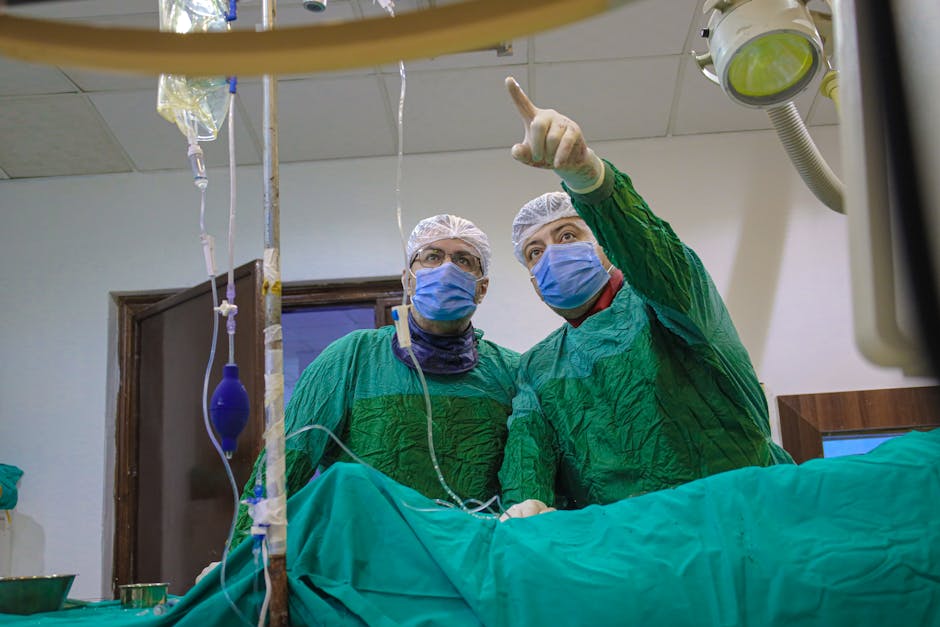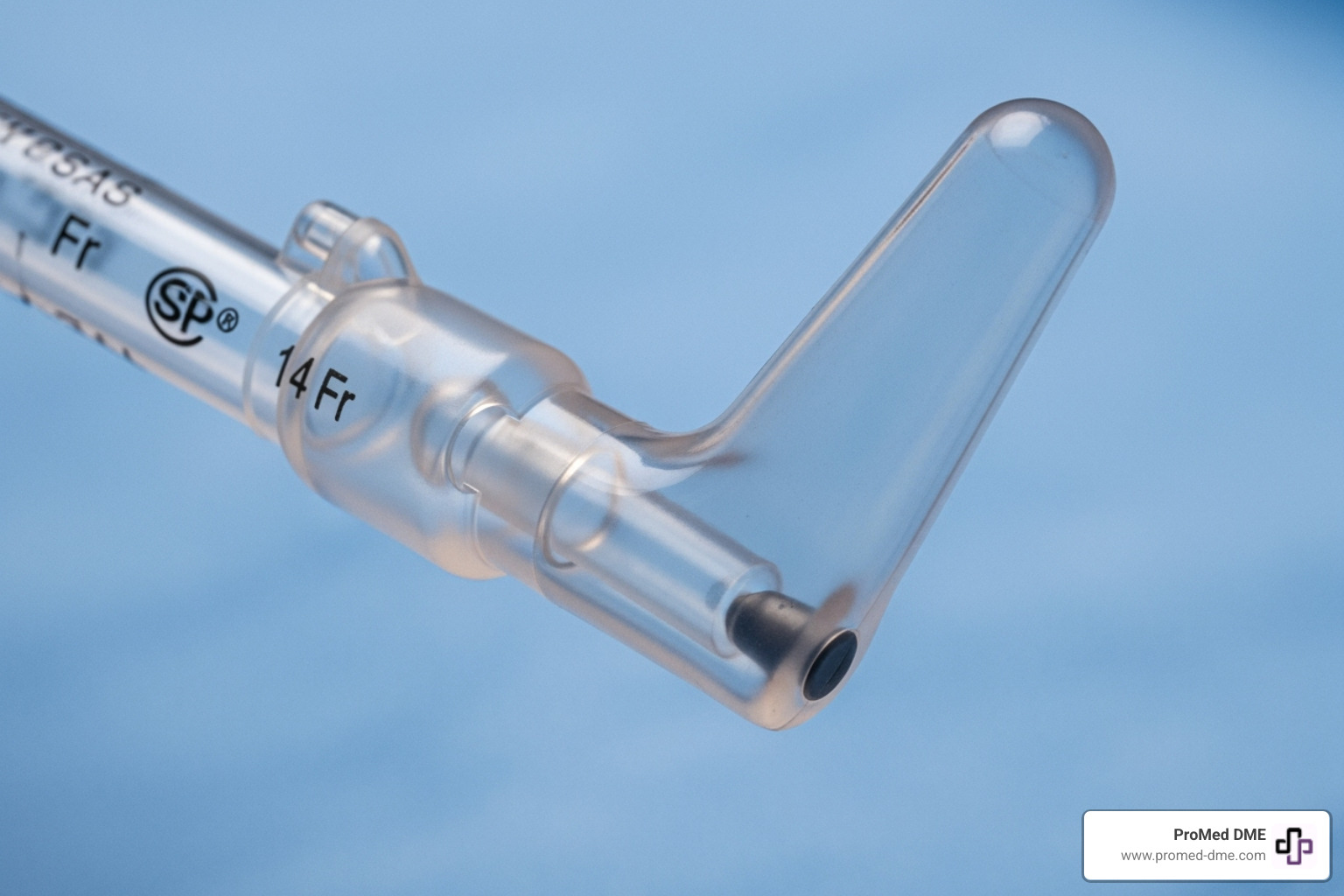The Catheterization Chronicles: A Beginner's Guide

Understanding Catheterization: The Basics You Need to Know
Catheterization is a medical procedure that involves inserting a thin tube, called a catheter, into the body for diagnostic or therapeutic purposes. It's often used to access and treat specific organs or areas such as the heart, bladder, or blood vessels. While the concept might sound intimidating, catheterization is usually a routine and low-risk procedure that can provide crucial health insights.
Here's a quick rundown of what catheterization is all about:
- Purpose: Catheterization can help diagnose and treat conditions by allowing direct access to specific body areas.
- Types: There are primarily two types - cardiac catheterization for the heart and urinary catheterization for the bladder.
- Procedure: The catheter is gently inserted into the body, often through the groin or wrist, and guided to the target area for treatment or diagnosis.
In this guide, we'll explore the different types of catheterization and what you can expect during the procedure. Whether cardiac or urinary, understanding this process can empower you to make informed health decisions.

Find more about catheterization:- female intermittent catheters- how to insert urinary catheter male- urinary catheter
Understanding Catheterization
When you hear the term catheterization, it might sound complex, but it's a straightforward procedure with significant benefits. Let's break down the two main types: cardiac and urinary catheterization.
Cardiac Catheterization
Cardiac catheterization is a pivotal procedure used to examine how well your heart functions. This procedure is not only common but also essential for diagnosing heart conditions.
During a cardiac catheterization, a doctor inserts a thin, flexible tube into a blood vessel, usually in the groin or wrist, and guides it to the heart. This allows them to perform various diagnostic tests and even treatments such as angioplasty, which opens blocked arteries.

Why is it Done?
- Diagnosis: It helps identify blocked or narrowed arteries, heart valve issues, and congenital heart defects.
- Treatment: It can be used for procedures like balloon angioplasty and stenting to open blocked arteries.
According to a study, cardiac catheterization benefits both men and women after a heart attack, reducing the risk of death and further heart complications. However, the benefits might differ for those with unstable angina. 
Urinary Catheterization
Urinary catheterization is another essential procedure, primarily used when someone cannot naturally empty their bladder. This can be due to nerve damage, surgery, or blockages.
The catheter is inserted through the urethra into the bladder to drain urine. There are different types of urinary catheters, including intermittent, indwelling (Foley), and suprapubic catheters.

Why is it Done?
- Assistance: Helps individuals who have trouble urinating naturally.
- Surgery Preparation: Used before or after surgery to ensure the bladder is empty.
- Medical Conditions: Provides relief and prevents complications in conditions like urinary retention.
Each type of catheter serves a specific purpose, making urinary catheterization a versatile tool in medical care.
Diagnostic Purposes
Catheterization is not just about treatment; it's also a vital diagnostic tool. For example, cardiac catheterization can include coronary angiography, where dye is injected to make blood vessels visible on X-rays. This helps doctors pinpoint blockages or other issues.
Urinary catheterization can help diagnose issues related to urinary retention or blockages. By providing a clear pathway for urine, it helps assess bladder function and detect underlying problems.
In summary, whether it's for the heart or the bladder, catheterization is a valuable procedure that aids in both diagnosing and treating various medical conditions. Understanding the basics of these procedures can help explain them and alleviate any concerns you might have.
Types of Catheterization
When it comes to catheterization, there are a few key types you should know about: cardiac catheterization, urinary catheterization, and coronary angiography. Each serves a unique purpose in the medical world.
Cardiac Catheterization
Cardiac catheterization is a crucial procedure for evaluating heart health. During this process, a doctor inserts a thin tube into a blood vessel, usually in the groin or wrist, and guides it to the heart. This allows doctors to assess heart function and perform treatments if needed.
- Purpose: It's used to diagnose blocked arteries, heart valve problems, and congenital heart defects. Treatments like angioplasty, which opens blocked arteries, can also be performed during this procedure.
- Benefits: Studies show that cardiac catheterization is beneficial for both men and women after a heart attack, significantly reducing the risk of further complications.
Urinary Catheterization
Urinary catheterization is used when someone can't empty their bladder naturally. This might be due to surgery, nerve problems, or blockages.
- Types:
- Intermittent Catheters: Inserted as needed to drain the bladder.
- Indwelling (Foley) Catheters: Remain in place for continuous drainage.
- Suprapubic Catheters: Enter the bladder through a small hole in the abdomen.
- Purpose: It helps manage urinary retention and can be used before or after surgery to ensure the bladder is empty.
Coronary Angiography
Coronary angiography is a specialized form of cardiac catheterization. It involves injecting a special dye through the catheter to visualize the coronary arteries on X-ray images.
- Purpose: This procedure helps identify narrow or blocked arteries that could lead to heart attacks.
- Process: The dye makes the blood vessels visible on X-rays, allowing doctors to pinpoint issues accurately.
Understanding these types of catheterization can help you grasp their importance in diagnosing and treating various medical conditions. Whether it's checking heart health or ensuring proper bladder function, these procedures are vital tools in modern medicine.
The Catheterization Procedure
Catheterization is a vital medical procedure that can diagnose and treat various health conditions. Understanding the steps involved can help ease any anxiety you might have. Here's a simple breakdown of what to expect during the process.
Preparation
Before the procedure, your healthcare team will help you get ready. You'll change into a hospital gown and remove any jewelry or dentures. It's important to empty your bladder beforehand.
Your team will check your vital signs like blood pressure and pulse. Sticky patches may be placed on your chest to monitor your heartbeat throughout the procedure. If necessary, the area where the catheter will be inserted may be shaved.
Sedation
A small needle will be used to insert an IV into your forearm or hand. Through this IV, you may receive a sedative to help you feel calm or sleepy. The level of sedation depends on the type of catheterization and your health needs. You might be fully awake, lightly sedated, or given general anesthesia for a sleep-like state.
Insertion
For cardiac catheterization, the doctor will insert a thin, flexible tube called a catheter into a blood vessel, often in the groin or wrist. They’ll guide the tube to your heart. If you're having a urinary catheterization, the tube will be inserted into your bladder.
During the procedure, your doctor may ask you to take deep breaths, hold your breath, or move your arms. If you're awake, let your healthcare team know if you feel any discomfort.
Recovery
Once the procedure is complete, the catheter is gently removed. Pressure is applied to the insertion site to prevent bleeding. If the catheter was placed in your groin, you might need to lie flat for a few hours to help the artery heal.
You’ll spend some time in a recovery room where your vital signs and the insertion site are monitored. If a closure device was used, a sterile dressing will be applied, and a tight bandage might be placed over the site.
After a few hours, you may be allowed to go home, or you might stay overnight for observation. It's important to drink plenty of fluids to help flush any dye used during the procedure from your body.
Understanding the catheterization procedure can make the experience less daunting. Whether it's for heart health or urinary issues, knowing what to expect helps you feel more prepared and at ease.
Risks and Complications
While catheterization is a common and generally safe procedure, like any medical intervention, it carries some risks and potential complications. Here’s what you need to know about the most common issues: bleeding, infection, and allergic reactions.
Bleeding
Bleeding is a possible complication, especially at the site where the catheter is inserted. After the procedure, healthcare providers will apply pressure to minimize bleeding. If you notice continuous or heavy bleeding that can't be controlled with a small bandage, contact your healthcare provider immediately. It's important to monitor the site for any new or increased swelling or pain.
Infection
Infections can occur if bacteria enter the body through the catheter. Urinary tract infections (UTIs) are the most common type, particularly with long-term or indwelling catheters. Symptoms of a UTI include a burning sensation during urination, cloudy or foul-smelling urine, and fever. To reduce the risk, maintain good hygiene and follow any specific care instructions provided by your healthcare provider. For cardiac catheterization, infection at the insertion site is rare but possible, so keep the area clean and dry.
Allergic Reactions
Some people may experience allergic reactions to the materials used in the catheter or to contrast dye used during certain procedures like cardiac catheterization. Symptoms can range from mild itching or rash to more severe reactions like difficulty breathing. Let your healthcare team know if you have any known allergies, especially to latex or iodine-based contrast dyes, before the procedure. They can take steps to minimize this risk by using alternative materials or medications.
Understanding these risks and complications helps you stay informed and proactive about your health. Always communicate openly with your healthcare provider about any concerns or symptoms you experience after catheterization. This ensures you receive the best possible care and helps prevent minor issues from becoming major problems.
Frequently Asked Questions about Catheterization
What is the purpose of catheterization?
Catheterization serves many important roles in healthcare. It helps doctors gather diagnostic information about your body. For instance, cardiac catheterization provides insights into how well your heart functions. Doctors use this procedure to check for blocked arteries or valve problems. This helps them decide the best treatment for heart issues.
On the other hand, urinary catheterization helps drain urine from the bladder when a person can't do it naturally. This could be due to nerve damage, surgery, or blockages.
How painful is catheterization?
The thought of catheterization might make some people nervous. However, the procedure is usually not painful. Doctors often use an anaesthetic gel to numb the area where the catheter will be inserted. This helps reduce any discomfort.
Some people might feel slight pressure or a bit of discomfort during the procedure, but this is generally manageable. For cardiac catheterization, you might be lightly sedated, which means you'll feel relaxed or even sleepy.
Is catheterization a major surgery?
No, catheterization is not a major surgery. It is a minimally invasive procedure, meaning it involves only small cuts or no cuts at all. Most catheterization procedures are done as an outpatient procedure, so you can go home the same day.
For example, during cardiac catheterization, a thin tube is inserted through a blood vessel in your wrist or groin. This allows doctors to access the heart without needing to open up the chest. Similarly, urinary catheters are inserted through the urethra or a small cut in the abdomen.
Both types of catheterization are designed to be as gentle as possible, with a focus on quick recovery and minimal disruption to your daily life.
Conclusion
At ProMed DME, we understand that navigating catheterization can feel overwhelming. Our mission is to make this journey as smooth and comfortable as possible. We are committed to providing top-quality products and exceptional customer service to support you every step of the way.
Why Choose ProMed DME?
Quality Products: We offer a wide range of durable medical supplies, including urology products, designed to meet your specific needs. Our products are carefully selected to ensure they provide the highest level of comfort and reliability.
Exceptional Customer Service: Our team is dedicated to helping you find the right solutions for your healthcare needs. We have a dedicated nurse on staff to answer your questions and offer guidance. Plus, we work with most insurance plans to help reduce out-of-pocket expenses.
Convenience: We ship across the United States from our base in Stuart, Florida, and offer free shipping on all orders. Our goal is to ensure you receive your supplies promptly and discreetly.
Choosing the right catheter supplies isn't just about managing a condition—it's about enhancing your quality of life. Whether you're new to catheterization or looking for better solutions, we're here to help. Visit our urology page to explore our comprehensive range of products and find how we can support your journey toward optimal health.
Thank you for considering ProMed DME as your trusted partner in catheter care. Together, we can steer your healthcare needs and support your journey toward a healthier, more independent life.
Related Resources & Articles
Stay informed with our informative blog posts.
Discover the ProMed Advantage
& Try Our Products
We offer free shipping and legendary customer service to ensure you receive the
best DME products for your needs.



